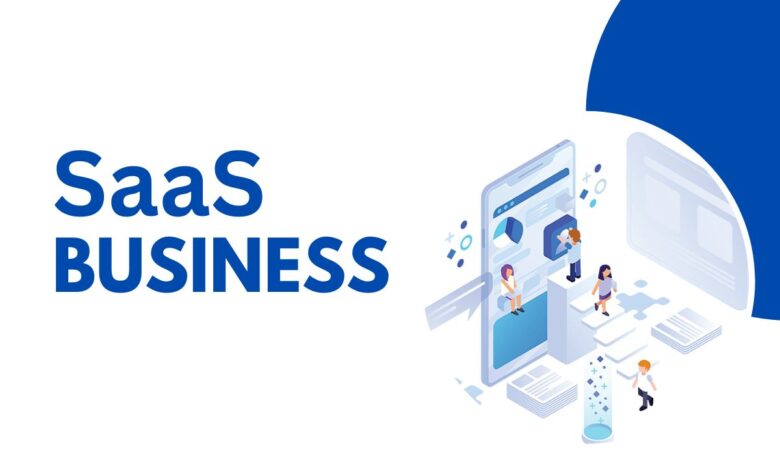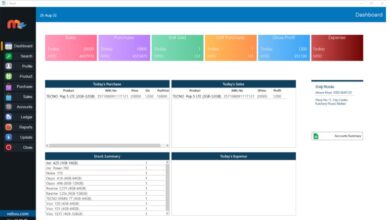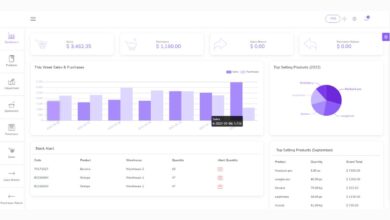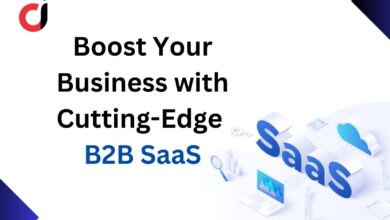Saas Business: Building a Profitable Future in 2023

In the ever-evolving landscape of business, Saas Business has emerged as a revolutionary concept. It’s more than just a technology; it signifies a paradigm shift in how businesses operate and deliver value to their customers. In this article, we will explore the depths of the Saas Business world, uncovering its intricacies, advantages, challenges, and strategies for achieving remarkable success.
Table of Contents
I. Introduction to SaaS Business
A. Definition of SaaS
SaaS, an acronym for Software as a Service, refers to a cloud-based service where users can access software applications over the internet. Unlike traditional software, SaaS eliminates the need for downloading and installing applications on individual computers.
B. Importance and Growth of SaaS Industry
The SaaS industry has witnessed exponential growth in recent years. Its importance lies in its ability to offer cost-effective, scalable, and convenient solutions to businesses of all sizes.
II. Advantages of SaaS Business
A. Cost-effectiveness
SaaS significantly reduces upfront costs as businesses don’t need to invest in hardware or software licenses. Instead, they pay a subscription fee, making it affordable for startups and small businesses.
B. Scalability
SaaS platforms are highly scalable, allowing businesses to easily adjust their subscription plans based on their needs. Whether it’s accommodating new users or expanding services, scalability is a pivotal feature.
C. Accessibility and Convenience
SaaS applications can be accessed from any device with an internet connection. This accessibility ensures that businesses can operate seamlessly, even with remote teams spread across the globe.
III. How to Start a SaaS Business
A. Market Research and Niche Selection
Before venturing into the SaaS world, thorough market research is essential. Identify a niche where there is demand but limited competition. Success requires an understanding of the target audience.
B. Developing a Unique Value Proposition
In a competitive market, a unique value proposition sets a SaaS business apart. Focus on what makes the service distinct and how it solves specific problems for the users.
C. Building the Product and Infrastructure
Once the concept is solidified, invest in developing a user-friendly interface and robust infrastructure. User experience is paramount in SaaS; an intuitive design can enhance customer satisfaction.
IV. SaaS Business Models
A. Subscription-based Model
Charging customers a recurring subscription fee is the most common SaaS business model. It provides a steady stream of revenue, allowing for predictable cash flow.
B. Freemium Model
Freemium offers basic services for free and charges for premium features. It’s an effective way to attract users and upsell premium services based on their needs.
C. Enterprise-level SaaS
Tailoring services for large enterprises involves customizations, security features, and dedicated support. Enterprise-level SaaS demands a comprehensive understanding of the specific requirements of corporate clients.
V. Marketing Strategies for SaaS Business
A. Content Marketing and SEO
Creating valuable content through blogs, tutorials, and webinars establishes authority in the industry. SEO optimization ensures that the content ranks high in search engine results, increasing visibility.
B. Social Media Promotion
Social media platforms are invaluable for engaging with the audience. Regular updates, interactive posts, and engaging visuals create a loyal follower base.
C. Influencer Marketing and Partnerships
Collaborating with influencers and industry partners can exponentially increase the reach of a SaaS business. Their endorsement adds credibility and attracts a wider audience.
VI. Challenges and Solutions in SaaS Business
A. Customer Retention and Churn Rate
Retaining customers is a challenge faced by all SaaS businesses. Providing excellent customer support, regular updates, and personalized experiences can reduce churn rates.
B. Security Concerns and Data Protection
Data security is a top priority for SaaS businesses. Implementing robust encryption, compliance with data protection laws, and regular security audits are crucial for building trust with users.
C. Handling Competition and Market Saturation
The secret to remaining one step ahead of the competition is constant innovation. Monitoring market trends, gathering customer feedback, and adapting the service accordingly ensures relevance and competitiveness.
VII. Scaling Your SaaS Business
A. Expansion Strategies
Expanding to new markets or adding complementary services can fuel growth. Researching and understanding the new audience is vital for successful expansion.
B. Customer Feedback and Product Improvements
Listening to customer feedback and incorporating it into product improvements enhances user satisfaction. SaaS businesses should be agile in adapting to changing customer needs.
C. Scaling the Workforce and Infrastructure
As the customer base grows, scaling the workforce and infrastructure becomes imperative. Efficient management, automation, and strategic partnerships facilitate smooth scaling.
VIII. Case Studies and Success Stories
A. Highlighting Successful SaaS Businesses
Examining case studies of successful SaaS businesses provides valuable insights. Understanding their strategies, challenges faced, and how they overcame them can inspire aspiring entrepreneurs.
B. Learning from Their Strategies and Challenges
Analyzing the strategies and challenges of successful SaaS businesses can serve as a guide for newcomers. Learning from both their successes and failures provides a well-rounded perspective.
Conclusion:
In conclusion, venturing into the SaaS business arena offers immense opportunities for innovation and growth. While challenges exist, strategic planning, customer-centric approaches, and adaptability can pave the way for success. Aspiring entrepreneurs should embrace the ever-changing digital landscape and position their SaaS offerings as solutions to real-world problems.
B2B SaaS: Boost Your Business with Cutting-Edge Solutions
FAQs
Q1: What distinguishes SaaS from traditional software models?
SaaS delivers cloud-based applications over the internet, eliminating the need for physical installation. It emphasizes ongoing service, accessibility, and flexibility, setting it apart from traditional software models.
Q2: How can SaaS businesses ensure continuous innovation?
SaaS businesses should actively monitor market trends, analyze competitor strategies, and solicit feedback from users. Incorporating these insights into product development fosters innovation and keeps the offerings relevant and competitive.
Q3: What role does customer engagement play in the success of a SaaS venture?
Customer engagement is paramount. SaaS businesses should provide excellent customer support, actively seek feedback, and foster a sense of community among users. Engaged customers are more likely to remain loyal and advocate for the product.
Q4: How can startups leverage the scalability of SaaS solutions?
Startups can benefit from the scalability of SaaS by paying for resources and features as they need them. This flexibility allows startups to align their expenses with their growth, ensuring efficient resource utilization.
Q5: What are the key considerations for selecting a niche market in the SaaS industry?
When selecting a niche market, businesses should focus on specific needs within the industry that are not adequately addressed. Conducting thorough market research, understanding pain points, and tailoring solutions to meet those needs are essential considerations.


